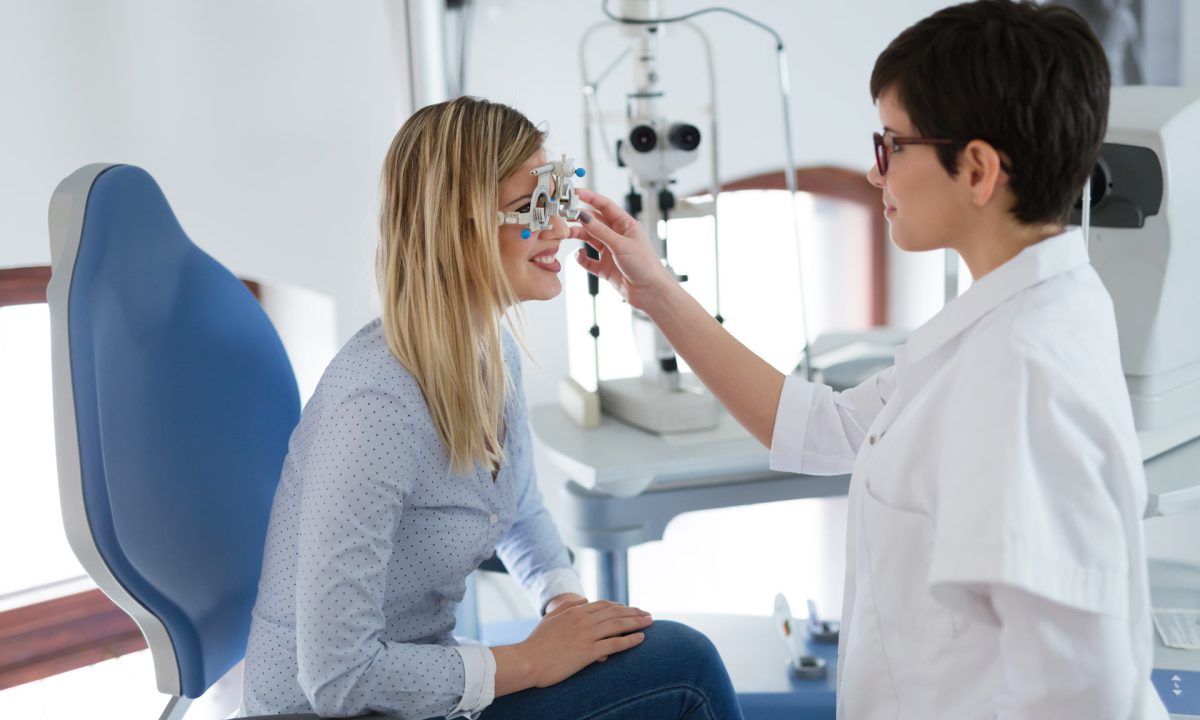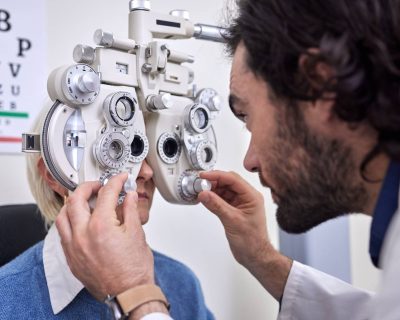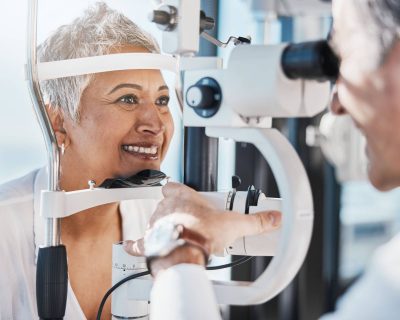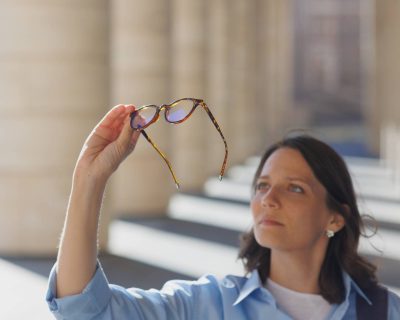
Nearsightedness: What is Myopia?
What is Myopia?
Myopia is an eye condition also known as nearsightedness. It’s when you have difficulty in seeing distant objects but are still able to see near objects clearly. Myopia occurs when the shape of your eyes causes light rays to bend incorrectly, focusing images in front of your retina instead of on your retina. This can also be called refractive error.
What is Refractive Error?
Refractive error occurs when the shape of one’s eyes doesn’t allow light to focus correctly on the retina. The cornea and lens work together to bend light into your retina so that you can see clearly. If one’s eyeball is too long from the front to back or the cornea is too curved or there are problems with the shape of your lens, light will bend away from or not focus directly on the retina. When light coming into your eye focuses in front of the retina instead of on it, looking at faraway objects to turn out fuzzy and even unrecognizable. Those that are nearsighted have a negative prescription of -3 for example and the higher the grade results in a stronger lens.
How common is Myopia?
In Canada more than 30% are myopic with trends suggesting this vision disorder is growing among school-aged children. Myopia tends to develop when you spend a substantial amount of time performing “near activities”. This would include reading, using smartphones and computers. There is a strong correlation with those that have myopia and those that regularly perform the above mentioned activities.
Can it lead to blindness?
Myopia is generally not a serious vision disorder and can be usually corrected through eyeglasses, contact lenses and sometimes surgery. However, there are rare cases of degenerative myopia where vision worsens at a more constant rate than what is considered “normal”. Degenerative myopia is the leading cause of legal blindness and it affects about 2% of the population.
Causes
Based on eye experts, they are unsure of the exact cause of myopia but they believe that it is caused through both hereditary genes and environmental factors. You can be born myopic but only develop myopia if you use your eyes for near activities such as reading and working on a computer.
Symptoms
There are some evident symptoms to look for if you find yourself developing or have myopia. Such symptoms include but not limited to:
- Faraway objects look blurred or fuzzy but close items appear clear
- Constant headaches
- Eye strain
- Squinting
- Tiredness when driving, playing sports or looking more than a few feet away
Some symptoms of myopia that can occur in children can include but not limited to are:
- Persistently squinting
- Need to sit close to the television, movie screen or the front of the classroom
- Seem to be unaware of distant objects
- Blink excessively
- Rub his or her eyes frequently
When to see a Optometrist
Even though myopia is generally not a severe vision disorder and tends to develop over time there are some cases when seeing an optometrist is necessary. If any of these symptoms occur seek medical care:
- Sudden appearance of many floaters – tiny specks that seem to drift through your field of vision
- Flashes of light in one or both eyes
- A curtain-like shadow over your visual field
How to prevent myopia from getting worse?
Despite myopia being an inherited vision disorder it can also be developed through personal lifestyle. There are some preventative measures you can apply to both your routine and diet to help reduce the risks of myopia. Some of these routine and lifestyle changes that can be implemented to prevent myopia from getting worse are :
- Limit time on digital devices
- Take screen breaks often to stretch your eye muscles
- Don’t read or work in dim or no light environments
- Go outside to allow yourself to look at things in the distance
- Wear sunglasses outside
- Wear protective eye gear for sports and hobbies
- Schedule regular eye exams
Along with implementing routines and lifestyle changes, changing your diet can prevent myopia from getting worse. One diet change is to limit caffeinated colas and proper hydration through enough water. Another dietary change is to eat food rich in vitamins. Vitamin A rich food include sweet potatoes, leafy green vegetables, carrots, cheese, oily fish or liver. With enough vitamin A it helps maintain the surface of your eyes and contribute to healthy vision. Vitamin C rich foods include fruits and vegetables, specifically oranges, strawberries and broccoli. It helps lower the risk of developing cataracts and can slow the progression of myopia. Lastly, Lutein which is consumed through leafy green vegetables, helps your eyes in filtering harmful blue light from computer and phone screens that have been known to damage retinas. With the availability of supplements you could get your essential vitamins through a multivitamin. However your body absorbs vitamins better through food than through a pill.
Does myopia get worse with age?
Myopia tends to develop gradually in children with the possibility of adults developing myopia too. In children myopia develops the most through growth spurts as the body grows. A pre-teen can quickly develop myopia through their teenage years till they reach their early 20’s when myopia usually stops increasing. Within adults myopia usually develops through visual stress or a disease like diabetes or cataracts and doesn’t develop myopia the same way children develop the visual disorder.
How is myopia diagnosed?
During a child’s eye exam the eye care provided will check for a regular light reflex. For children between the ages of 3 and 5 years of age the eye care provider will conduct a vision screen using eye chart tests, pictures, or letters.If the child has family members with vision issues it is more important to test their eyes early. In children it is recommended that they have their first eye exam before the age of 1 and if no issues are found their next eye exam should be conducted before kindergarten. After that the child should be tested every 2 years. Three out of four nearsighted children are diagnosed with myopia between the ages of 3 and 12.
During an adult’s eye exam they also test how your eyes focus in light and measure the power of any corrective lenses you may need. Sharpness is also tested based on reading letters on an eye chart. Instruments such as the lighted retinoscope are used to measure how light is reflected by your retina. Another instrument used is the phoropter, it measures the amount of refractive error seen by placing a series of lenses in front of your eyes and this determines the strength or grade of lens you need. It’s recommended that you attend an eye exam every five to ten years in your 20s and 30s, two to four years from 40s – 50s, one to three years from 55 – 64, and one to two years after 65 years of age
How is myopia treated?
There are many corrective treatments to help remedy Myopia some are less intrusive as well as less costly while others require surgery and can be quite expensive. These forms of treatment include:
Eyeglasses
Most popular option to correct myopia because it’s both inexpensive and less intrusive. Eyeglasses are usually worn when driving or when distance vision is needed. Depending on the activity you might need to wear the glasses all the time or only during certain activities.
Contact lenses
Another inexpensive option, contact lenses allow you to place individual lenses into each eye which may allow vision to be sharper and wider. However the downside is that they require more after care and time to apply into your eyes.
CRT
Similar to contact lenses but they can be worn to bed and they physically reshape the cornea temporarily. They are then taken out before the start of the day and myopia is temporarily remedied for daily activities.
Lasik
Laser-assisted in situ keratomileusis procedure where a laser is used to cut a flap through the top of the cornea, reshape the inner corneal tissue and then drops the flap back
Lasek
A laser-assisted subepithelial keratectomy procedure where a laser is used to cut a flap through only the top layer (epithelium) of the cornea, reshapes the outer layers and then closes the flap
Intraocular lens implant
Insert a new lens in your eye, replacing your natural one
Myopia is developing to be a common vision disorder and it’s trending to be common in children as well. Despite myopia being hereditary, it can also be developed through lifestyle choices, however you can take steps to prevent it from getting worse or from developing in the first place. Even if you develop myopia through the years there is an abundant amount of options to correct this vision disorder. With some of those options being inexpensive and unobtrusive while other options being costly and intrusive. Regardless of the option you choose living with myopia or fixing it, this vision disorder is experienced by many others.





2 comments on “Nearsightedness: What is Myopia?”